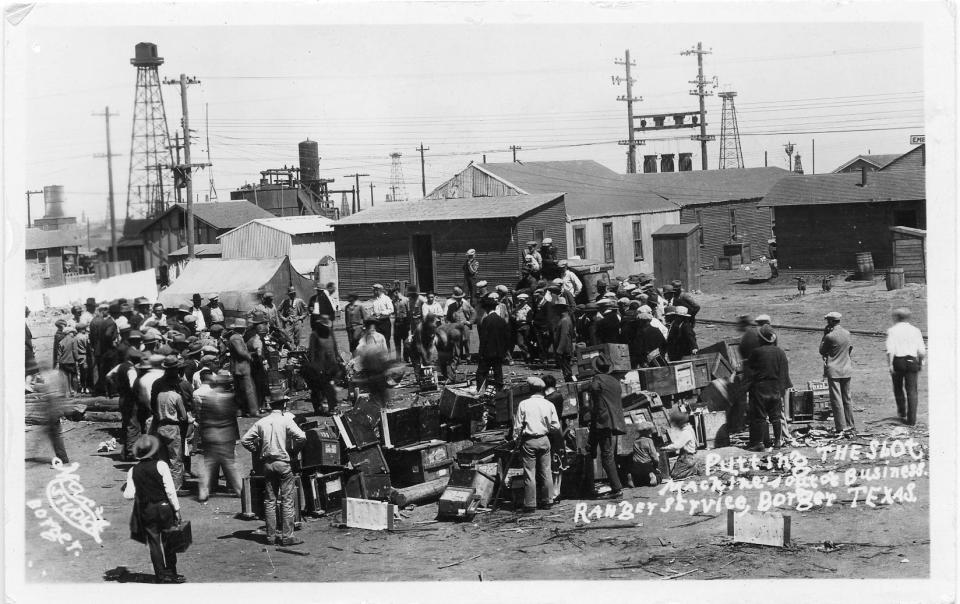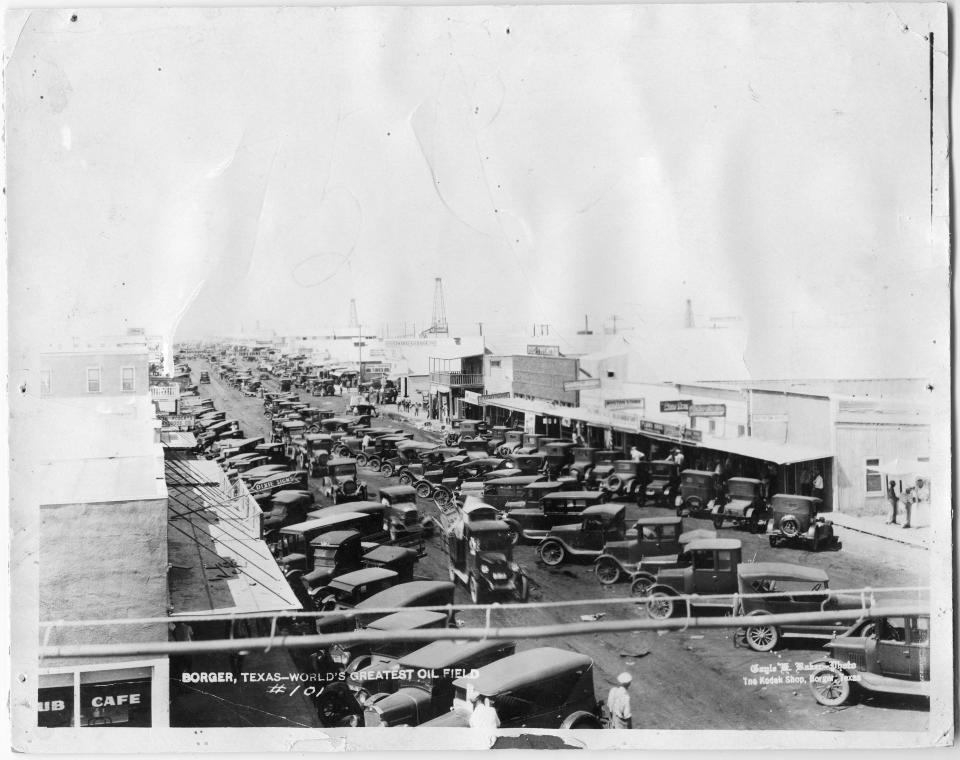Caprock Chronicles: Borger's wild side and the lure of black gold
- Oops!Something went wrong.Please try again later.
Editor's Note: Jack Becker is the editor of the Caprock Chronicles and is librarian emeritus of Texas Tech University Libraries. He can be reached at jack.becker@ttu.edu. Today’s article is by Marty Kuhlman, PhD, and professor of history at West Texas A&M University.
In 1921, the first oil well appeared in Hutchison County, and by the summer of 1926, 135 wells were producing 48,000 barrels daily. The lure of "black gold" brought in many fortune seekers.
A.P. “Ace” Borger and John R. Miller saw the potential profits of purchasing land and reselling as town lots as a path to wealth. They purchased 240 acres for $12,000 in March of 1926.
Borger advertised the land in area newspapers, and people snatched up the lots. In six months, the Borger Townsite Company had sold all lots and taken in more than a million dollars. The population surged to 45,000, as people rushed in, putting up tents and wooden buildings, making Borger the sixth largest town in Texas.

By October of 1926, the town had been incorporated with a number of legitimate institutions such as a post office, a school district, and a jail. Telephone service and steam-generated electricity were also available by the end of 1926.
Roughnecks and wildcatters flocked into Borger to exploit the oil resources. Along with the workers came card sharks, bootleggers, prostitutes, and dope peddlers. Dixon Street became the center of this trade and was known for its brothels, dance halls, gambling houses, and speakeasies. Slot machines rang out through the night.
City officials ran much of the criminal activities. In a shady election Miller became mayor of Borger. He brought in a number of prostitutes who paid officials a fee for the right to work in the city.
Miller also brought in “Two Gun” Dick Herwig, a convicted murderer on parole, as town marshal. Herwig ran a network of stills, which supplied whiskey to the saloons. Herwig also became known as “the biggest pimp of all.”
Dan Moody became Texas governor in 1927 on a platform of law and order. After a report of the murders of two deputy sheriffs on Dixon Street and letters from law-abiding citizens of Borger, Moody sent in a detachment of Texas Rangers under the command of captains Frank Hamer and Thomas R. Hickman.
The Rangers, backed by US marshals and federal Prohibition agents, forced much of the illicit trade out of the city. Herwig left with his ill-gotten gains and set up camp in New Mexico. After shutting down at least two dozen saloons and gambling houses, the Rangers announced Borger to be “100% better.”
When the Rangers left town, the criminal elements slinked back in. The red-light district grew.
In 1928, Moody appointed John A. Holmes as district attorney of Hutchison County. Holmes went to work cleaning up Borger. He turned down a number of bribes and faced death threats as he did his job. On Friday, Sept. 13, 1929, an assassin hid behind a bush in Holmes’ front yard and shot him in his garage.
The murder of Holmes took place before his scheduled appearance to testify against 14 bootleggers in front of a grand jury in Amarillo. The Holmes murder was the thirtieth that had occurred in or near Borger since December of 1926.

Moody reacted quickly to the “dastardly crime of a low-life assassin” and sent a Ranger detachment under Hamer and Hickman back to Borger. Hamer reported that “the worst crime ring I have seen in my 23 years as an officer exists in Borger.”
The governor issued a martial law order for Hutchison County. Ninety-three members of the Texas National Guard left Dallas in civilian clothes and did not don uniforms until reaching Amarillo so as not to tip off the criminal element.
The National Guard began cleaning up Borger and made hundreds of arrests. City officials including members of the police and the sheriff lost their positions. An Amarillo newspaper reported that on the first day of martial law the National Guard shut down “at least 36 saloons, blind tigers [speakeasies], gambling halls, and houses of ill repute."
News of the raids gained national attention appearing in the New York Times.
Law abiding citizens applauded as a court of inquiry convened. Mayor Glenn A. Pace faced arrest for having intimidated a witness.
Out of the investigation Sam Jones, a former deputy constable, and Jim Hodges were indicted for the murder of Holmes, but never prosecuted.
Death threats continued. The governor received a death threat. County judge H. M. Hood and another witness were mailed the ace of spades, a death card.
One more prominent homicide took place. Ace Borger had been convicted for receiving deposits in the insolvent Borger State Bank and sentenced to two years. While out on appeal Arthur Huey gunned Borger down on Aug. 31, 1934.
Residents wanted the world to know the criminal element had left Borger. A number of newspapers in the following years reported that Borger extends “a glad hand to clean, honest and responsible people.”
The lawless period in Borger was short but intense.
This article originally appeared on Lubbock Avalanche-Journal: Caprock Chronicles: Borger's wild side and the lure of black gold

